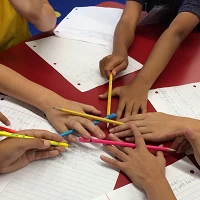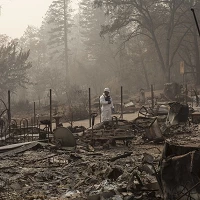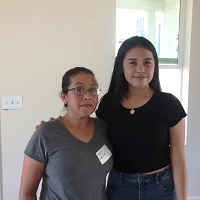The students in Paradise Unified School District, who moved to Chico after the fire, use this same road to get to school. Dena Kapsalis, Director of Student Services at the district, was surprised at first by how many students chose to return.

Truancy at Paradise Unified School District
Now Kapsalis is on to the next challenge —getting students to show up. She’s responsible for fighting chronic absenteeism in the district, and this was a challenge before the fire. Chronic Absenteeism is defined as missing more than 10 percent of the school year for any reason. According to data from the 2016-2017 school year, Paradise Unified School District has higher rates of chronic absenteeism when compared with other districts, with 18% of students classified as chronically absent. That’s about a 64 percent increase from the state average.
According to Kapsalis, being exposed to trauma makes it harder for students to attend school.
“One of the things that we know about trauma is that it impacts the entire family and it impacts family systems...if those are impacted then there’s a breakdown," she said. "Sometimes for some students, especially in the rural environment that we’re in, that means not making it to school or not making it on the bus that comes to school.”
Even before the Camp Fire, Butte County residents experienced more traumatic childhood events on average than residents of any other county in the state. According to a survey, 76 percent of Butte County residents reported having more than one adverse childhood experience. Based on what happened in Santa Rosa after the Tubbs fire, the additional exposure to trauma from the Camp fire could impact already high rates of chronic absenteeism.
Looking To Santa Rosa
The Mark West School district, on the outskirts of Santa Rosa, was hit hard by the Tubbs fire. According to the district superintendent, Ron Calloway, about 220 students in the district lost their home in 2017. Nearly two years later, students at the district’s Riebli Elementary are still faced with daily reminders of the fire. Dozens of houses are under construction just past the school fence-line. Although the Tubbs fire leveled the neighborhood around their campus, it miraculously skipped over the school.
Calloway says he started noticing a drop in attendance a year after the Tubbs fire. He expects the same to happen in Paradise.
“What’s going to happen, in my opinion, is people because of the rebuild are wanting some time away, they’re going to pull back, especially that second year,” he said. “When they first come back there’s that energy of coming back and being into normalcy, but then that emotional wear and tear, people want to pull back and take a break from the area.”
Missing School Can Impact Your Health
Taking breaks within reason can be a needed respite for families. Missing too much school, however, can have negative health consequences. Chronic absenteeism puts students at risk of dropping out altogether and not having a high school diploma is associated with lower life expectancy. Kapsalis has seen how missing school plays out for students over time.
“I’ve seen the result of them being non-employable, having addiction issues,” she said. "I’ve seen, of course, some of those families experience hardship for multiple generations."
Kapsalis has knocked on doors, driven to gas stations, and scoured bike trails to find truant students and encourage them to return to school. Her district is also sending school busses to the FEMA camp and other neighborhoods outside the district known to now house their students. With all of the chaos happening in students' lives, Kapasalis wants it to be as easy as possible to get to school.
This story was produced for the 2019 USC Annenberg Health Journalism Fellowship.

 Live Radio
Live Radio









